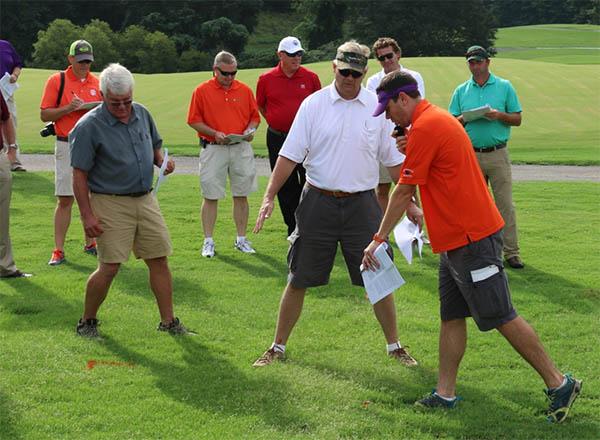Granted, there are new challenges facing turfgrass managers every year that require new solutions and new ways of looking at things. But if Clemson Universitys exhaustive "Pest Control Guidelines for Professional Turfgrass Managers" doesnt have a solution, then the problem probably does not exist yet.
 At 153 pages, the guide covers topics for turfgrass managers like poison control, insects, diseases, nematodes, weed identification and control, herbicide resistance, PGRs, activated charcoal, vegetation management, aquatics, tank-mixing, pesticide calibration, metric conversions and carrier water quality and how it influences pesticide stability.
At 153 pages, the guide covers topics for turfgrass managers like poison control, insects, diseases, nematodes, weed identification and control, herbicide resistance, PGRs, activated charcoal, vegetation management, aquatics, tank-mixing, pesticide calibration, metric conversions and carrier water quality and how it influences pesticide stability.Authored by Clemson University faculty, the downloadable publication also has a template for tracking and recording pesticide applications.
The section on insects includes control options for annual bluegrass weevil, nuisance and fire ants, billbugs, various caterpillars, chinch bugs, mole crickets and white grubs, including chemical control options and application rates.
The guide includes information, including control options, for dozens of diseases that include algae, anthracnose (leaf blight and basal rot), brown patch, dead spot, dollar spot, Bermudagrass decline, take-all patch and more. For each disease, the guide includes basic taxonomy, grasses affected as well as symptoms, fungicide recommendations (including active ingredients), label rates and application intervals.
A section on nematode control provides background on the challenges associated with managing sting, ring, stubby-root, lance, root-knot and spiral nematodes, tips on fumigating prior to seeding or sprigging and tips on safe applications.
The section on weed control is exhaustive and covers 35 pages. It includes a handy table that lists more than 80 types of weeds common in turf cross-referenced by effectiveness of control by more than two dozen active ingredients. It also includes a list of more than 60 active ingredients (either alone or in combination with another product), diseases for which each is labeled for control, grasses on which it can be used and tips on rates and intervals.

